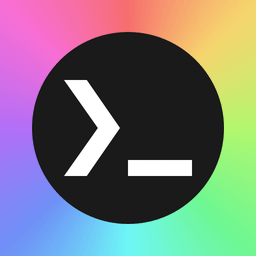deleted by creator
Damn polybar looks much easier to configure than waybar…
I prefer waybar as you can do css. I would say that waybar modules generally have more options. However I like the polybar feature where you can have parts of one module in a different colour. For waybar to achieve the same effect I have to make two different modules and use css to display them together
Can you link the wallpaper too?
Done, under dots
Looks like Catppuccin to me… I like it though.
Thanks, colours are based on the wallpaper. But yes for gtk I used catppuccin for the similarity
deleted by creator
If you’re planning to do a major desktop environment move that’s going to shake things up anyway, you might want to consider doing the jump to Wayland at the same time; sway is a nearly-drop-in replacement for i3 on X11, just on Wayland.
Personally, I don’t specially love i3 – it doesn’t magically provide out-of-box all that much that I want. I didn’t use it and say “oh, fantastic, these people have come up with brilliant ways to solve problems that I had that I hadn’t thought of”. But by the same token, it doesn’t do anything that I dislike either, and it’s got a lot of momentum – I’m pretty sure that it’s the most-widely-used tiling WM, which counts for a lot if you want a tiling environment. And it’s configurable, with enough flexibility to bang it into shape and do what you want.
I personally am not enthusiastic about the out-of-box way sway and i3 switch desktops, would have rather had, I think, something like a “ring of rings” of desktops, kind of like emacs’s torus. But, eh.
The out-of-box status bar stuff isn’t what I think most heavy i3 users use, but you can go configure it to your heart’s content. On i3, I used
conky-i3bar, which is pretty flexible. On sway,waybar. Neither is the default.The screen-locking didn’t do what I wanted out-of-box, and trying to set up swaylock to do what I did want (to have a key combination to lock the screen, then to power down the screen if I didn’t type for more than a few seconds while locked) was kind of obnoxious, moreso than I’d expected.
Neither had a
dmenu-type software package set up out-of-box, though I am reasonably confident that most heavy i3 users use one of those (on i3 I usedrofi, and on sway,tofi).I don’t think I wound up using a single default keybinding on a regular basis.
But, I mean, it’s fast and stable and gets the job done reasonably well in my book once I had it set up. Both i3 and sway work really hard to support reloading config in a live instance rather than needing to restart (well, that wouldn’t be such a huge deal with i3, as killing and restarting a WM isn’t so bad on X11, but you can’t kill off a compositor on Wayland and keep things going). My past WMs had more-intrusive forms of restarting to re-read config.
Thank you for the appreciation. Personally, I can’t live without i3, and you can always have plasma installed as well; there’s no need to choose between them. If you’re new to the concept, I started with Regolith to become more comfortable with i3. Technically, you can use my Polybar and Rofi on plasma if you just like their appearance : )
Polybar works on KDE, it’s not restricted to Tiling WMs like i3. You can add it to your Autostart apps in KDE either directly with arguments or a simple shell script to run multiple custom bars.
https://github.com/polybar/polybar
Edit: This blog post I found shows an example of a similar tiled end result in KDE with Polybar (but with a very different colour scheme) https://blog.rishikumar.dev/posts/plasma_polybar/





